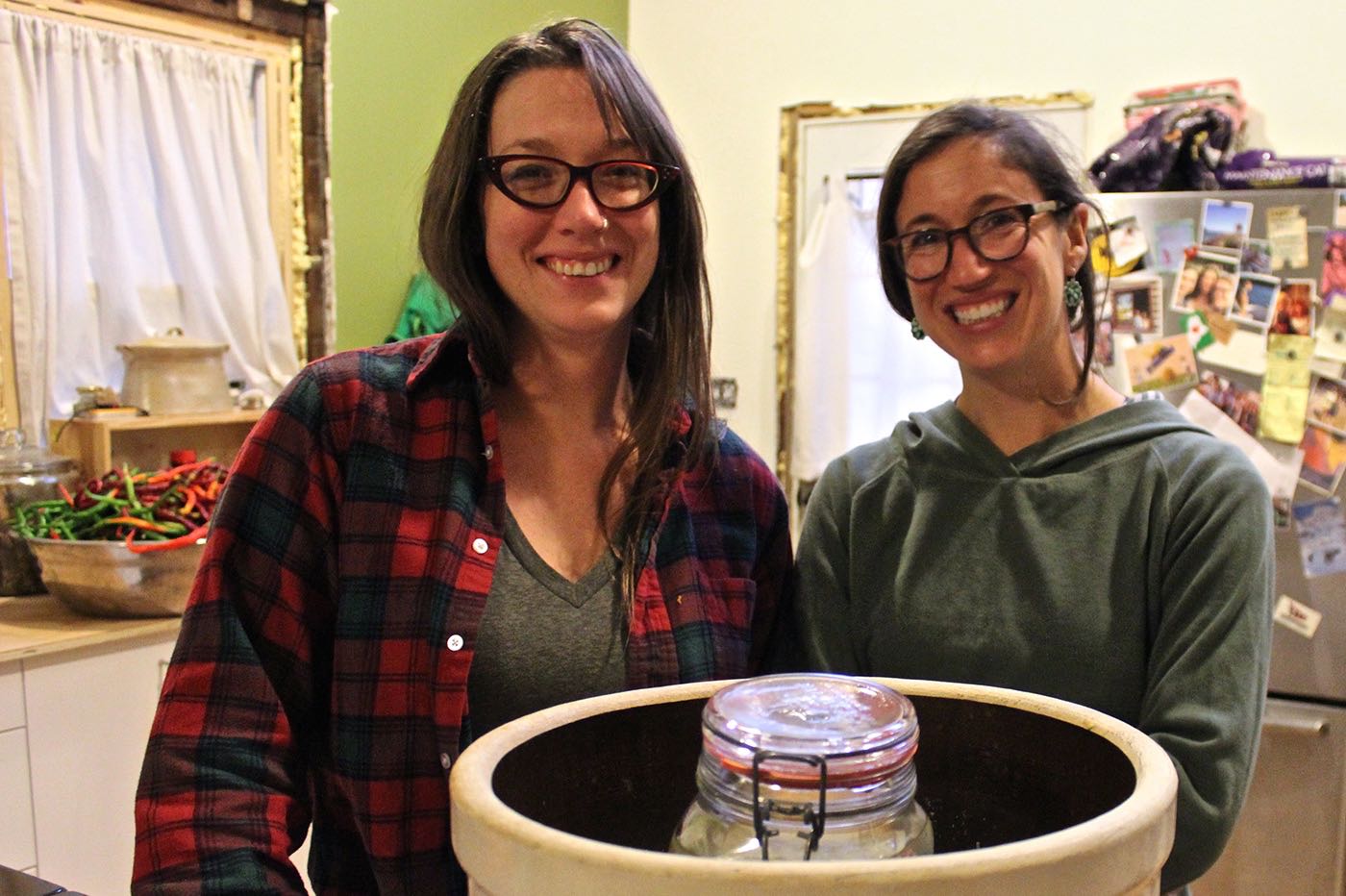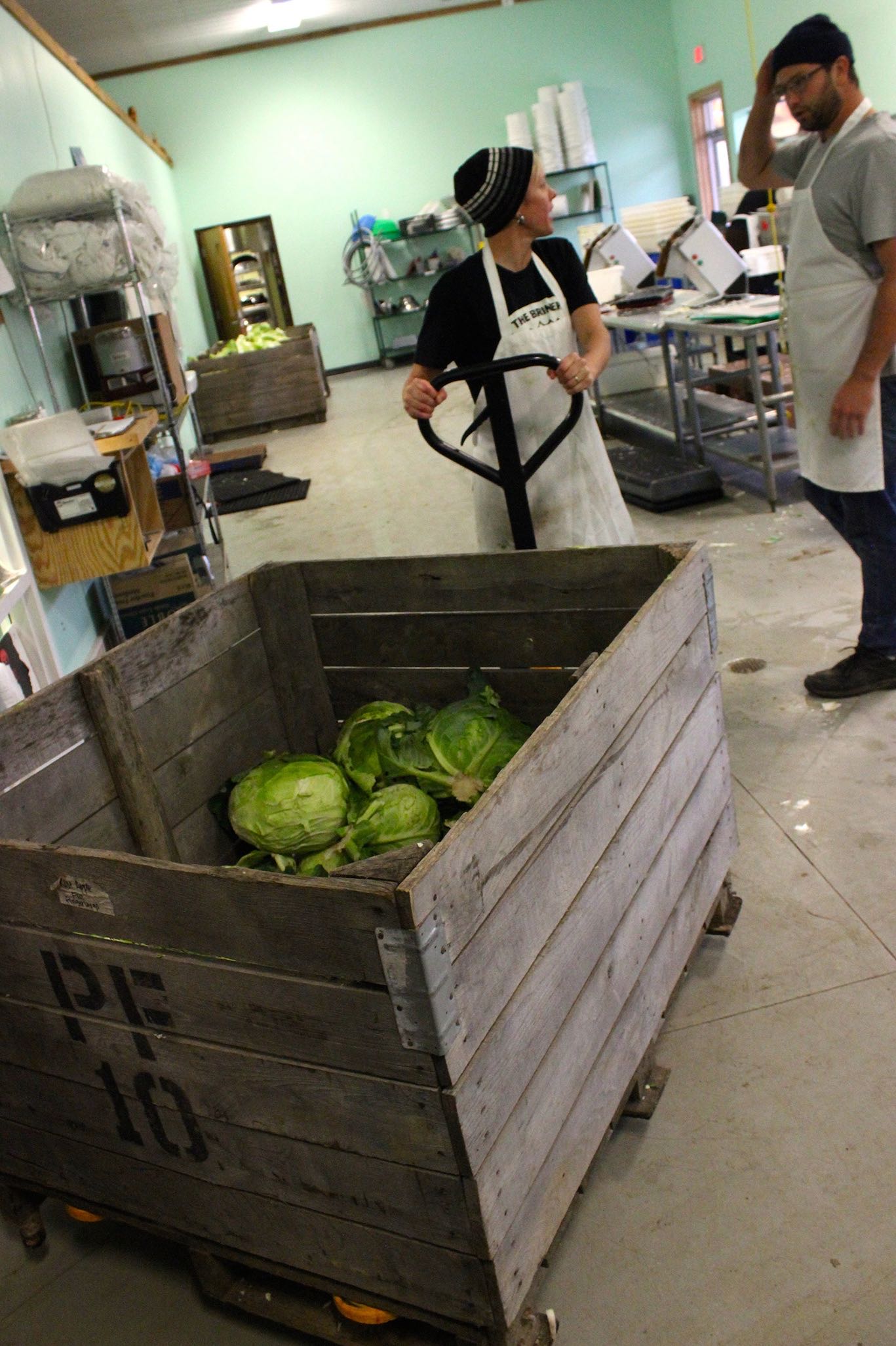A fermenting culture: Detroit food businesses harness the science (and flavor) of fermentation
Sarah Rose Sharp |
Monday, December 05, 2016
It is easy, in our first-world era of refrigeration and international produce exchange, to think of food culture as a never-ending string of trends and dietary fads. But certain techniques stretch back to the bedrock of civilization, and have developed hand-in-hand with human society, to the point where bacterial culture and human culture are indistinguishable.
I'm talking, of course, about fermentation. Perhaps best known for its application in dairy and alcohol products, in reality it's a process that may be enacted with any type of food that contains water. On a biological level, the chain reaction of fermentation involves the encouragement of certain naturally occurring yeasts or bacteria, which variously produce effects that have been useful in the long-term preservation of food, the cultivation of complex nutritional and delicious flavor profiles, and recently discovered health benefits.
While its capacity for food preservation explains part of fermentation's multicultural, wide-ranging, and ancient use, Stephen Roginson, co-founder of
Detroit's Batch Brewing Company, has another theory.
"Beer, like everything else, was discovered accidentally, and it created an environment where people were healthier," says Roginson, in an interview that takes place during a sun-soaked and crowded happy hour in Batch's taproom. "Water was, for a very long time, an unsafe thing to drink. The organization of mankind around farming was not for making bread. It was for making beer so we didn't die of dysentery."
Alcoholic fermentation—like other types of fermentation—hinges on creating conditions that allow one type of organism to outperform others. In the case of beer, these are sugar-eating yeasts, which consume sugars like glucose and sucrose, and produce ethanol (aka alcohol) and carbon dioxide as side effects. Different yeasts have differing capacities to consume sugar—the percentage of available sugar a given yeast will eat before it expires is known as its "attenuation rate," and impacts both the flavor and the ABV of a given brew.
"As yeast ferments, it's creating a more and more toxic environment for itself," says Roginson. "So the more alcohol it produces, the more toxic the environment becomes, the less-well it produces results."
If Roginson is quick to emphasize the life-or-death stakes at the origins of domesticated fermentation, Alison Heeres and Gwen Meyer, cofounders of Coriander Kitchen and Farm, are endlessly fascinated with its cultural impact—both as a social practice and in terms of the microflora that is cultivated in the gut through regular consumption of fermented foods.
 Alison Heeres and Gwen Meyer of Coriander Kitchen and Farms
Alison Heeres and Gwen Meyer of Coriander Kitchen and Farms
"The baseline of fermentation is that it's a living thing, and in order for it to be fermented, it has to remain living," says Heeres, during a Coriander hot pepper processing session. In the case of vegetable fermentation, it's one among the family of lactobacillus bacteria at work, eating sugars and producing lactic acid as a side effect.
"We can preserve through acid, or through sugar," says Heeres, who, in addition to her work for Coriander, cooks at the popular Detroit eatery Katoi and manages the kitchen at
Trinosophes. "The Greeks and Romans preserved things with honey, and you can preserve through salting as well. Generally, rotting occurs when there's moisture. The act of salting removes moisture so things don't go bad—but it also alters the pH to facilitate fermentation."
Because Coriander's catering relies on the produce they grow at the farm (and source from other local growers), they need to employ techniques that prolong the shelf life of their harvests, creating sauerkrauts, hot sauces, pickled green tomatoes, chutneys, and other culinary delights that work their way into their catered meals.
The acidity of a substance is charted on a pH continuum numbered 0-14, with a pH of 0 being the most acidic (for example, battery acid, which has a pH of 1), 14 being the most alkaline (also called "basic"), and 7 being neutral. The optimum pH for fermentation is generally at a pH between 5 and 4.5—just as yeast with alcohol, the lactobacillus creates a progressively more acidic and less habitable environment for itself, with fermentation petering out once the pH of a substance dips below approximately 4.2. At this point, it's considered a stable, but still living ecosystem full of microbes.
"Fermentation is this strange race to try to encourage healthy microbes to grow faster than microbes that cause spoilage," says Heeres. The common process of pasteurization—that is, heating a substance to a temperature that will kill off any harmful pathogens—will also destroy the live cultures that make fermented products useful to our digestion. Thus finished ferments must be kept in cold storage to keep them both alive and food-safe.
Literalizing the human tendency to think with one's gut, there is new interest in the impact of fermented foods on mood disorders such as depression and anxiety. Even
conservative estimates suggest that our human bodies are composed one-to-one with living bacteria, which means supplementing a diet with the microbial ecosystems present in fermented foods offer not only
benefits to digestive health, but introduce helpful enzymes, b-vitamins, Omega-3 fatty acids, and various strains of probiotics. For example, eating yogurt will help your body restore its balance after taking a course of antibiotics.
 Prepping produce for fermentation at The Brinery
Prepping produce for fermentation at The Brinery
Preservation is at the heart of fermentation—the literal preservation of food, the strengthening of individual health and community ties, and the preservation of cultural tradition. David Klingenberger, founder and chief fermenting officer of
The Brinery in Ann Arbor, comes from a farming family, and embraces fermentation as a way of extending his hereditary trade.
"As an entrepreneur and a person trying to practice compassionate capitalism, I gravitate towards authentic, traditional, necessary foods. The way our ancestors ate," says Klingenberger, during a tour of the Brinery facility, which includes a processing floor, an expanding cold storage facility, and an entire roomful of barrels in different stages of ferment. "I want to make things that do not go out of style, that can weather an economic storm or fad."
The Brinery has been gaining momentum over its six years of operation, buying more than 100,000 pounds of produce from roughly a dozen local farmers over the last year for conversion into ferments that retail at 500 locations in the Midwest. Currently, renovations are underway for an on-site storefront that will enhance The Brinery's reputation as a destination for food tourism. Despite his business savvy, Klingenberger seems sincerely enamored with fermentation, and prone to wax philosophically on the subject.
"I named the business The Brinery because it's like the ocean—our blood has a salinity to it, amniotic fluid has a salinity to it, we all evolved from single-celled organisms out of the briny seas," he says. "It's how we're alive on this planet. Our cells have captured bacteria in there, mitochondria, that have separate DNA from humans—but we evolved and have this captured bacteria in each of our cells."
Indeed, the more one learns about the process of fermentation, the more it seems like an intentional mechanism—all these foods come preloaded with the bacteria that will cause fermentation, requiring only a few conditions to activate.
"I like to emphasize that we're not introducing anything here," says Klingenberger. "We're really just shepherds of preexisting elements."
He waves an arm in the direction of the production floor, where The Brinery crew has just done a day's work of processing hundreds of pounds of cabbage, now beginning its slow, two-month evolution into sauerkraut.
"Everything in nature really wants to ferment."
This piece is part of a series highlighting the role science plays in Detroit. It is supported by the Michigan Science Center.
All photos by Sarah Rose Sharp.